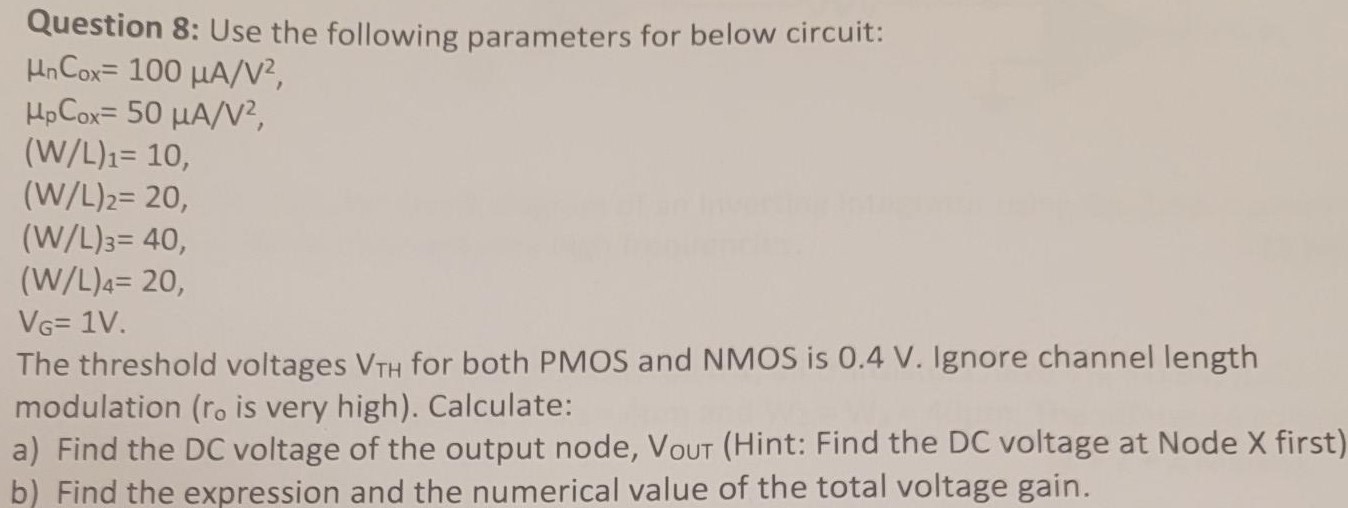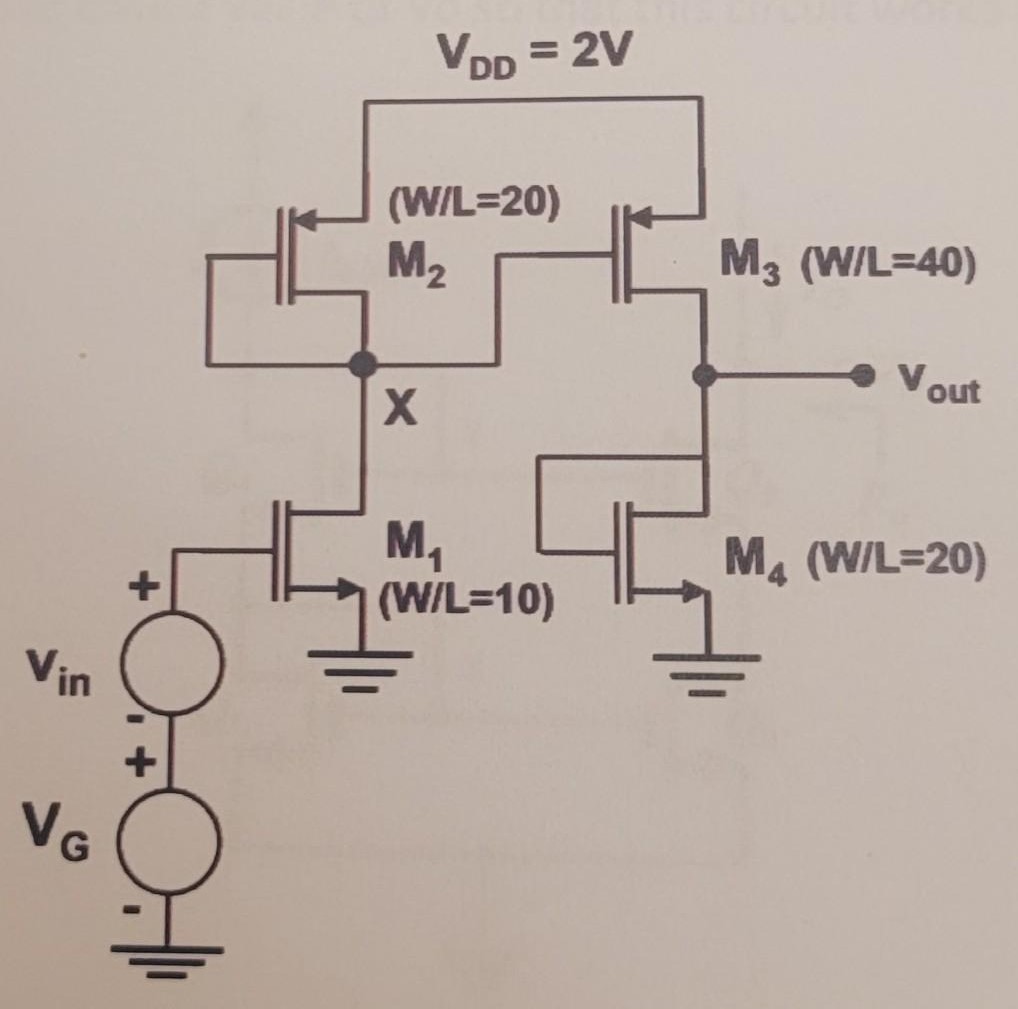Question 8: Use the following parameters for below circuit: unCox = 100 uA/V^2, upCox = 50 uA/V^2, (W/L)1 = 10 (W/L)2 = 20 ( W/L)3 = 40 (W/L)4 = 20 VG = 1 V. The threshold voltages VTH for both PMOS and NMOS is 0.4 V. Ignore channel length modulation (ro is very high). Calculate: a) Find the DC voltage of the output node, VOUT (Hint: Find the DC voltage at Node X first) b) Find the expression and the numerical value of the total voltage gain.




You'll get a detailed, step-by-step and expert verified solution.
 Work With Experts to Reach at Correct Answers
Work With Experts to Reach at Correct Answers